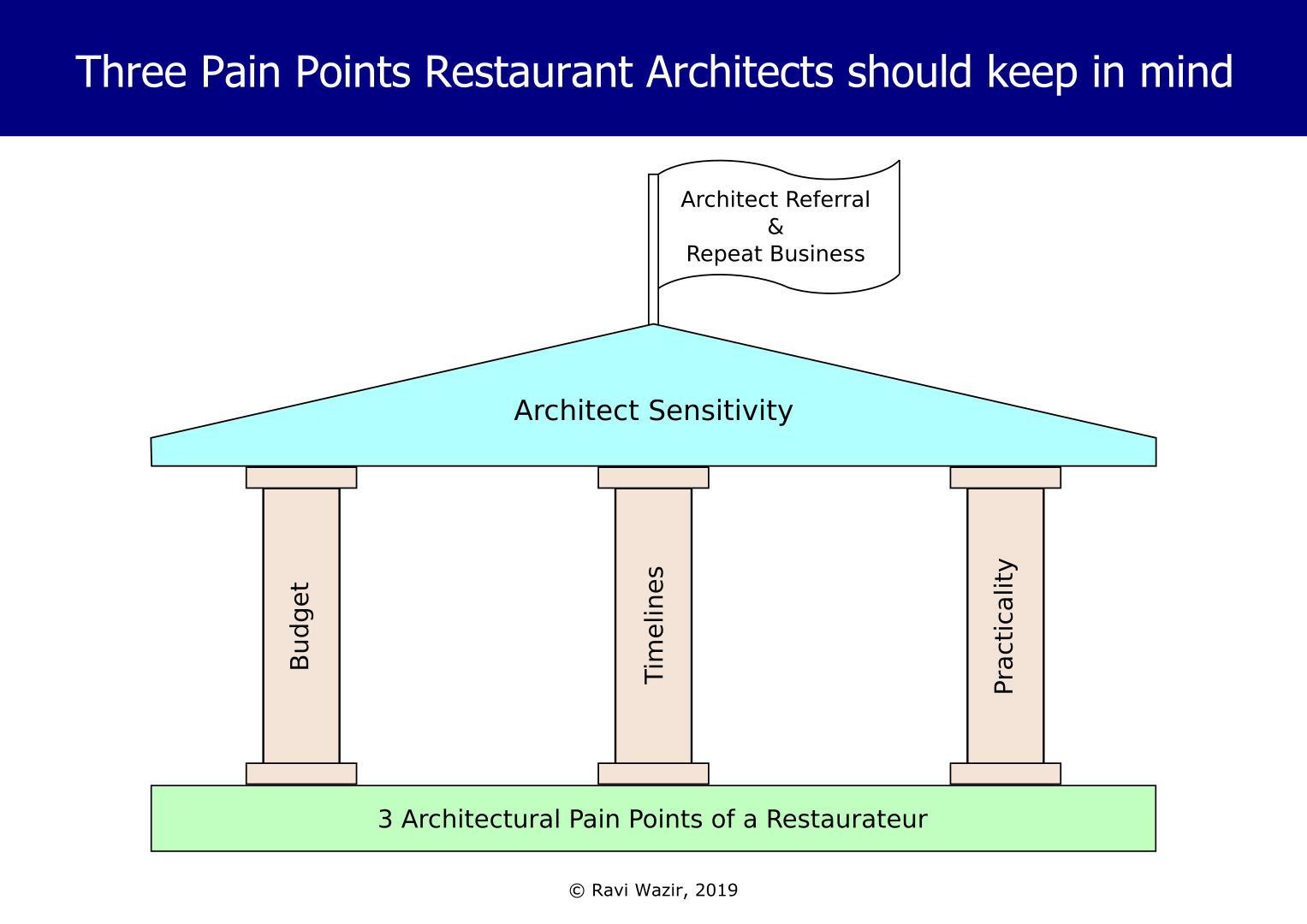Three Pain Points Restaurant Architects should keep in mind
Imagine someone motivated enough to put down all their life savings and then some, on starting an enterprise. Furthermore the kind of enterprise with one of the least survival rates of all enterprises known to man – the restaurant business! – where as the saying goes, “It takes a large fortune to make a small one”.
Over the years I’ve worked with many restaurant startups. On the design front, I’ve helped bridge understanding gaps between quite a few architectural teams and their restaurateur clients. Here’s what I’ve learnt from those experiences....
Of the countless things that a restaurateur must think of during his start-up, a critical one is capital expenditure. Within this, the largest component of time and money is the civil work, and the architect controls it. Very rarely does a restaurateur take on this massive job himself.
All architects undoubtedly suggest and implement designs. What differentiates the great ones from the average is the areas that they focus on. The best architects truly understand a restaurateur’s perspective and walk the talk of customer sensitivity. They genuinely care about repeat business and referrals from the restaurateur, and are willing to go that extra mile, never taking their clients for granted... even if they are buddies.
3 restaurateur pain points that the best architects manage well:
1. Budget
A restaurateur is always in a hurry to get the design and civil work completed yesterday. His fixed-cost-meter (rent, electricity & labour) is constantly ticking and is therefore a huge cause for concern.
It’s a given that both sides have infinite things to do. It doesn’t matter whether the civil contractor or other architectural agencies are a part of the architects own team or are outsourced. From the restaurateur’s viewpoint, in all civil or interior related matters, the buck stops with the architect.
A great architect owns this responsibility and ensures that every single time there is an alteration in the Bill of Quantities (BOQs), he gets his client’s approval on item-wise costs in writing and in real time rather than during or after execution. He knows that if he doesn’t, it will allow anxiety and doubt to creep into the relationship with his client.
2. Timelines
A restaurateur naturally knows that before an architect hands him back his space, and he can start earning an income from his restaurant, his month-on-month expenses will have begun and will continue for some time, for which he must prepare.
A proactive architect recognises the uncertainty of scheduling his own labour as well as the ambiguity in getting governmental clearances. He always sets his handover-timeline expectations with a restaurateur, well before signing-up. He knows it’s best not to work with a restaurateur who has unrealistic timelines, because he can never deliver on them, and thus the outcome of that association can never be good.
Again, the impact of any new developments on timelines should always continually be conveyed to the restaurateur, whether the changes are at his own request, a governmental obstacle, or a delay within the architectural team.
3. Design Practicality
Many creative people including architects at times feel that a restaurateur doesn’t always grasp their aesthetic sense.
In order to only just survive in a business as competitive and fast-paced as the restaurant business, the restaurateur himself must necessarily be a creative person; though in a completely different manner from the architect. The architect must understand this and carefully choose which battles to fight the restaurateur on, if at all he must.
Aesthetics at the cost of practicality are a long-term burden to the restaurant team who will need to execute their jobs smoothly each day after they take-over from the architectural team. For instance, in a restaurant where food is the hero, if an architect selects lighting that creates a great mood but doesn’t show off the food too well; it simply won’t serve the birth-purpose of that restaurant and will therefore be ineffective.

A great architect adds further value to a restaurant by creating awareness about aspects that his client may not know of. For example, in India today very few restaurateurs know about acoustics of their dining area and its impact on not just their ambience, but their popularity and income. Even if they do know about this, they may not be willing to spend on sound absorbers or deflectors. An architect who shows his clients how to achieve this on a small budget will earn their trust and give them great value for the time and money they have spent with him.
I believe that architects who are genuinely sensitive in attending to these 3 pain points of a restaurateur, and go above and beyond their obvious brief; inevitably receive the best lifetime value from the restaurateurs they work with.